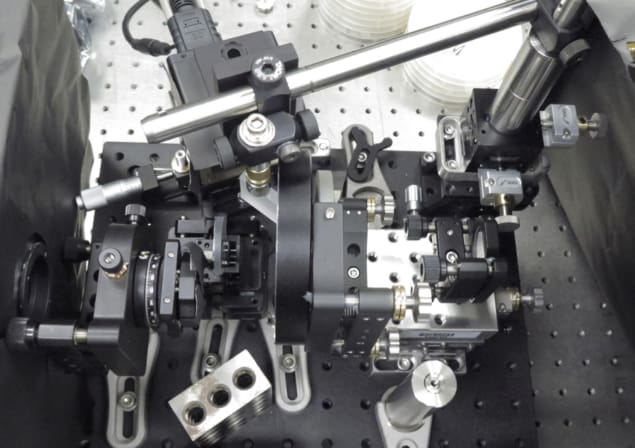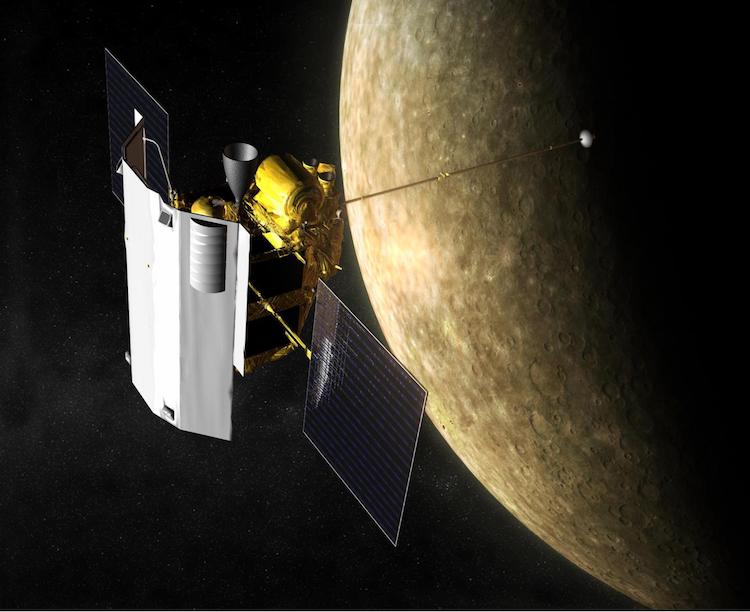
A new, slimline imaging spectrometer developed by researchers at the Massachusetts Institute of Technology (MIT) in the US boasts the same performance as the most advanced devices of its kind while being much more compact. Thanks to its reduced size, the instrument could perform remote terrestrial sensing from airborne vehicles such as drones or satellites and might even become a component of future space missions.
Imaging spectrometers that operate in the visible, near and short-wave infrared (VNIR/SWIR) regions of the electromagnetic spectrum are routinely deployed in studies of atmospheric science, ecology, geology, agriculture and forestry. They work by recording a series of monochromatic images, the spectrum of which is then analysed over a given imaging area. One of their advantages over traditional cameras is that they are very good at controlling the chromatic aberrations (blurring or distortion) that arise because of light being spread out over a region of space rather than focused to a point. They also have high signal-to-noise ratios. The snag, however, is that current devices are relatively bulky, which means they can’t be deployed on small satellites or drones.
11 times smaller in volume
Researchers led by Ronald Lockwood have now developed a miniaturized spectrometer with a volume of just 350 cm3 – less than one-tenth the size of standard instruments. One version of the new device, which is known as a “Chrisp” compact VNIR/SWIR imaging spectrometer (CCVIS), measures just 8.3 cm in diameter and 7 cm long.
To downsize their device, Lockwood and colleagues used an optical component called a catadioptric lens that consists of a concave meniscus with a reflective coating on the back. The lens acts as a concave mirror that corrects the spectrometer’s Petzval field curvature (that is, the optical aberration that prevents an object from being properly brought into focus). Because it combines reflective and refractive elements into a single component, the lens makes it possible for the spectrometer to control optical aberrations efficiently in a smaller volume.
In another miniaturizing move, the researchers used a special flat reflection grating that they immersed in a refractive medium, rather than in air as is usually the case. The flat grating takes up less space than a conventional convex or concave grating, but has the same spatial resolution, and Lockwood notes that it is also easier to make than a curved grating. While a flat grating can be made using a greyscale photolithographic microfabrication technique that only requires a one-time exposure, curved gratings require labour-intensive electron-beam processing, he explains.
New design fits on a smallsat
The researchers tested their new device on an aquatic remote sensing system made up of several CCVISs (each with a spectral range of 380 to 1050 nm) stacked behind a freeform telescope. The entire ensemble would easily fit onto a small satellite (smallsat) platform, and the miniaturized nature of the spectrometry modules means that they could be stacked in even greater numbers to further increase the field of view, Lockwood says. The spectrometers’ compactness also makes it easier to keep them at a stable temperature, thus ensuring consistent performance.
Lockwood tells Physics World that devices of this type could be deployed on a low Earth orbit satellite platform to map, monitor and track changes in coastal and inland aquatic systems ecosystems from an altitude of 500 km. Such measurements would come in useful for projects like the US National Research Council’s Decadal Survey, which aims to assess the characteristics and health of terrestrial vegetation and aquatic ecosystems, he explains. Surveys like these are important for understanding key consequences such as crop yields, carbon uptake and biodiversity.

Space-based spectrometer enters neutron lifetime debate
“Laboratory and field experiments, even when coupled with numerical models, are unable to quantify ecosystem processes with sufficient temporal spatial and spectral resolution,” he says. “Measuring habitat extent and spatial distribution and observing changes in these quantities can be achieved, however, by detecting the spectral signatures of ‘foundation’ species (such as sea grass meadows, coral reefs, emergent and terrestrial vegetation), their structures and their environment using a compact spectrometer like ours.”
The researchers, who report their work in Applied Optics, are now planning to seek funding from NASA to develop a full prototype that they could test on a real airborne vehicle. “This is always a challenge since NASA receives many meritorious proposals, but our CCVIS is certainly applicable to both terrestrial and planetary missions,” Lockwood says.
